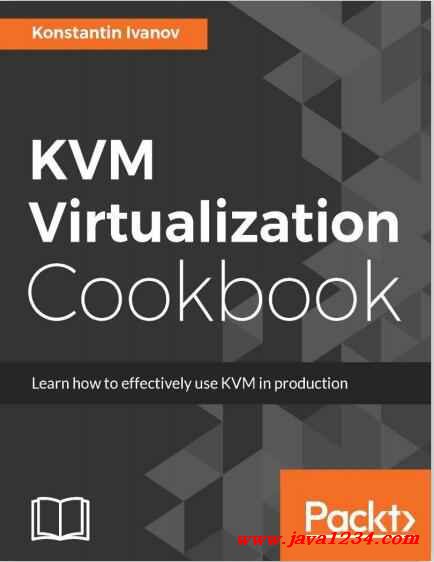| 失效链接处理 |
|
KVM Virtualization Cookbook Konstantin Ivanov PDF 下载
本站整理下载:
提取码:rlci
相关截图:

主要内容:
Preface The foundation of most modern cloud deployments is some sort of virtualization technology, such as Kernel-based Virtual Machine (KVM). KVM has been part of the mainstream Linux kernel since version 2.6.20, released in February 2007, and since then has enjoyed wide system adoption. Virtualization in general not only provides a way to fully utilize server resources, but also allows greater multitenancy, along with running various workloads on the same system. The OpenStack cloud operating system uses KVM as its default compute driver, providing a centralized way of managing the lifecycle of virtual machines: from building, resizing, and migrating to pausing and terminating. This book is about KVM and how to build and manage virtual machines in the most efficient way. Unlike containerization solutions such as Docker, KVM is designed to run an entire operating system rather than a single process. Although containerization has its advantages, full virtualization provides extra security by having the hypervisor layer between the guest OS and the host and added stability by running different guest kernels (kernel panic of the guest instance will not bring the entire host down) or entirely different operating systems. This book takes a rather direct and pragmatic step-by-step approach--you will learn how to create custom guest images, install and configure QEMU and libvirt, resize and migrate instances, deploy monitoring, and provision guests using OpenStack and Python.
What this book covers Chapter 1, Getting Started with QEMU and KVM, provides recipes for installing and configuring QEMU, creating and managing disk images, and running virtual machines with the qemu-system utility. Chapter 2, Using libvirt to Manage KVM, covers everything that is needed to install, configure, and run KVM instances using libvirt. You will learn what packages and tools are required, along with different ways of configuring virtual machines using XML definition files. By the end of this chapter, you will have a Linux system with running KVM instances. Chapter 3, KVM Networking with libvirt, will present recipes for working with the Linux Bridge and Open vSwitch and will demonstrate how to connect KVM instances using NAT, bridged, and PCI pass-through networking. Chapter 4, Migrating KVM Instances, will show examples on how to perform offline and online migration of running KVM virtual machines. Chapter 5, Monitoring and Backup of KVM Virtual Machines, will present examples on how to deploy complete monitoring systems with Sensu and Uchiwa and demonstrate how to create snapshots to use as backups. Chapter 6, Deploying KVM Instances with OpenStack, demonstrates how to provision KVM instances with OpenStack. It begins by introducing the various components that make OpenStack and how to use the LXC Nova driver to automatically provision virtual machines. Chapter 7, Using Python to Build and Manage KVM Instances, will present recipes for building, starting, and managing the lifecycle of KVM instances using the Python libvirt library. We will also see examples on how to build a simple RESTful API to work with KVM. Chapter 8, Kernel Tuning for KVM Performance, shows recipes for tuning the host OS for better I/O, CPU, memory, and network utilization. The presented examples can also be used inside the KVM instances, depending on their
|




 苏公网安备 32061202001004号
苏公网安备 32061202001004号



